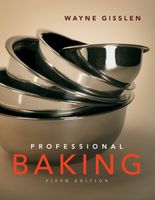Advertisement
Source of Microorganisms
Appears in
Published 2008
As you have read, if a flour-and-water dough or batter is left to stand long enough, sooner or later it is likely to start fermenting, either from yeasts and bacteria in the air and environment or from yeasts and bacteria that were already present in the flour. Unfortunately, however, just letting a dough stand and hoping for the best is not the ideal way to make a batch of bread. To create a starter, the baker usually looks for a more reliable source of fermentation.
Wild yeasts are naturally present on the surface of fruits and on the surface of whole grains, and these are the most common sources used for creating natural sours. Mixing whole-grain rye flour into a batter or dough with water and letting it stand until it ferments is one of the best and most reliable ways of creating a starter. The initial fermentation usually takes at least two or three days. Rye is a good environment for wild yeasts, and starters begun with rye are more likely to be more successful than starters begun with wheat flour only. Whole-grain rye generally contains more of these organisms, but if it is not available, use the darkest rye you can find. Light rye is made from the interior of the grain and contains fewer organisms.

